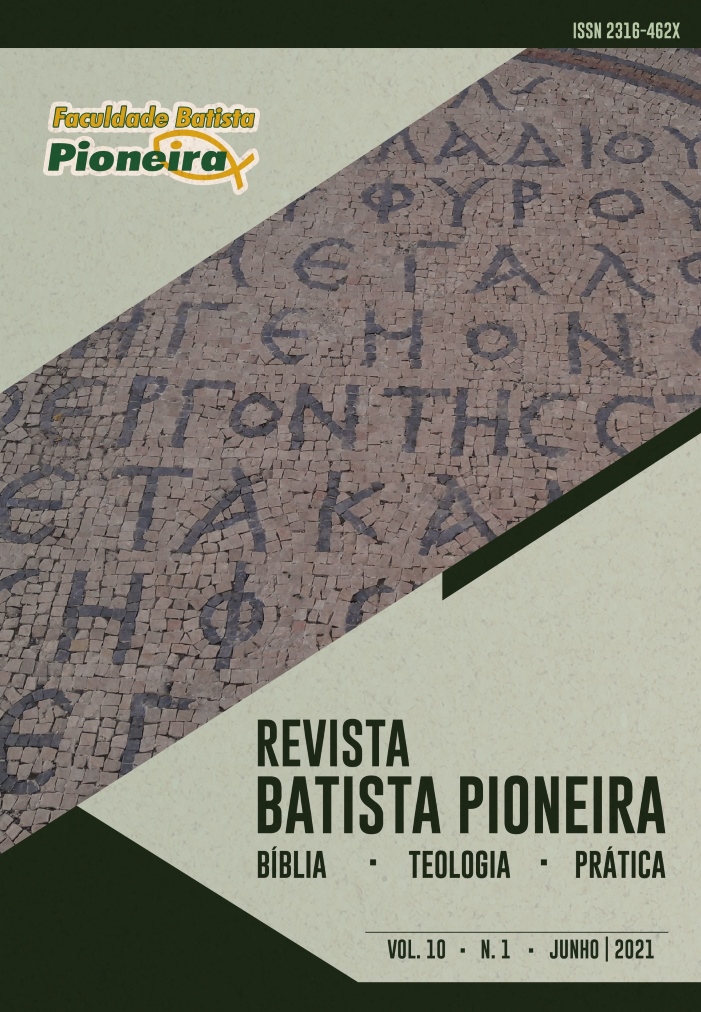As Relações Trinitárias e a Humanidade no Livro de Hebreus
Resumo
RESUMO: Este artigo pretende investigar o que o autor de Hebreus pensa acerca da Trindade no seu escrito. O artigo é dividido em duas partes: a análise de textos relevantes sobre o assunto e uma análise teológica destes textos. A investigação começa analisando os textos em que as três pessoas da Trindade aparecem juntas. Estes textos demonstram que o autor de Hebreus acredita na Trindade. Na análise dos textos, surge um dado extremamente interessante: o autor usa a expressão “Deus vivo (ou vivente)” para se referir ao Deus Trino. No livro, ressalta-se muito a relação Deus-Filho. Esta relação é importante para a compreensão da Trindade. Dois textos que tratam desta relação são analisados (1.1-14 e 5.5-10) e eles ressaltam duas verdades acerca da divindade de Jesus Cristo: que ele está exaltado acima de todos porque é da mesma natureza do Pai, sendo seu Filho, e que, em obediência ao Pai, ele se tornou o sumo sacerdote e o sacrifício para a salvação da humanidade. Depois, o artigo analisa dois textos (2.5-18 e 12.4-11) que demonstram que a encarnação e morte de Jesus o levou a ser o elo entre Deus e a humanidade e que, por causa dele, o Pai está educando seus muitos filhos para leva-los à glória. A segunda parte do artigo é uma análise teológica dos textos estudados na qual se declara que o autor de Hebreus crê na Trindade. Ele exalta a pessoa do Filho porque foi ele que se encarnou e morreu para dar à humanidade uma tão grande salvação. Esta salvação significa que Deus Pai, através da ação do Espírito Santo, está educando filhos, feitos à imagem do Filho Jesus, para que participem da vida da Trindade. Estes filhos refletirão a imagem da Trindade para a criação.
Palavras-chaves: Trindade em Hebreus; Teologia de Hebreus; salvação; propósito da salvação em Hebreus; Filho de Deus.
Trinity relations and humanity in the book of Hebrews
ABSTRACT: This article intends to investigate what the author of Hebrews thinks about the Trinity in his writing. The article is divided into two parts: an analysis of relevant texts on the subject and a theological analysis of these texts. The investigation begins by analyzing the texts in which the three persons of the Trinity appear together. These texts demonstrate that the author of Hebrews believes in the Trinity. In the analysis of the texts, an extremely interesting fact emerges: the author uses the expression “God alive (or living)” to refer to the Triune God. The book emphasizes the God-Son relationship. This relationship is important for understanding the Trinity. Two texts that deal with this relationship are analyzed (1.1-14 and 5.5-10) and they emphasize two truths about the divinity of Jesus Christ: that he is exalted above all because he is of the same nature as the Father, being his Son, and that , in obedience to the Father, he became the high priest and sacrifice for the salvation of mankind. Then, the article analyzes two texts (2.5-18 and 12.4-11) that demonstrate that the incarnation and death of Jesus led him to be the link between God and humanity and that, because of him, the Father is educating his many children. to bring them to glory. The second part of the article is a theological analysis of the texts studied in which it is declared that the author of Hebrews believes in the Trinity. He exalts the person of the Son because it was he who became incarnate and died to give humanity such a great salvation. This salvation means that God the Father, through the action of the Holy Spirit, is educating children, made in the image of the Son Jesus, to participate in the life of the Trinity. These children will reflect the image of the Trinity to creation.
Keywords: Trinity in Hebrews. Theology of Hebrews. Salvation. Purpose of salvation in Hebrews. Son of God.

